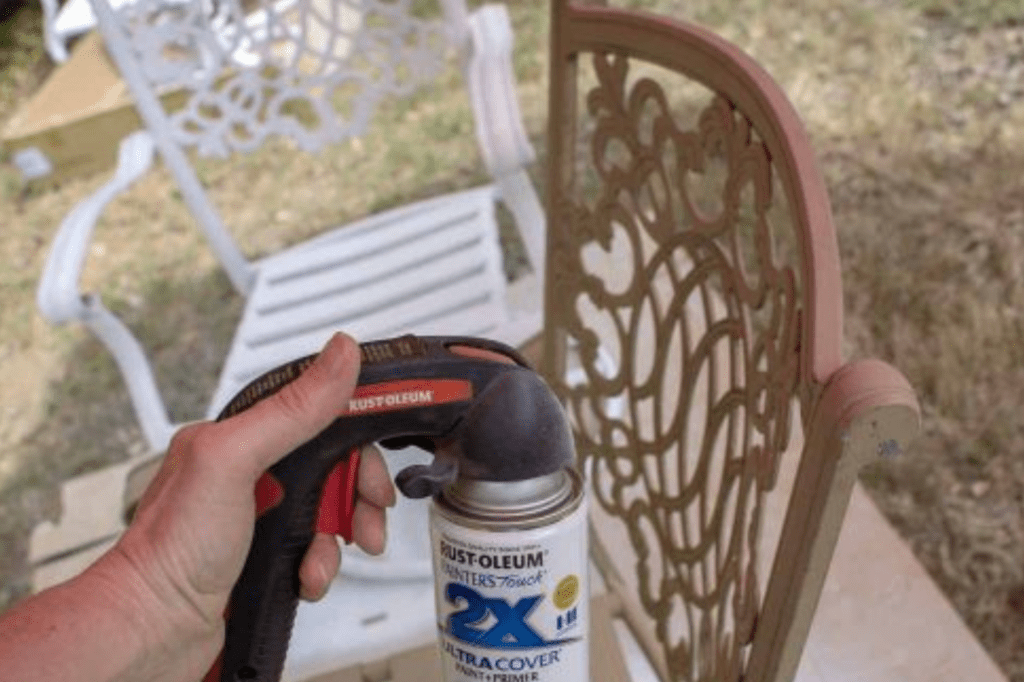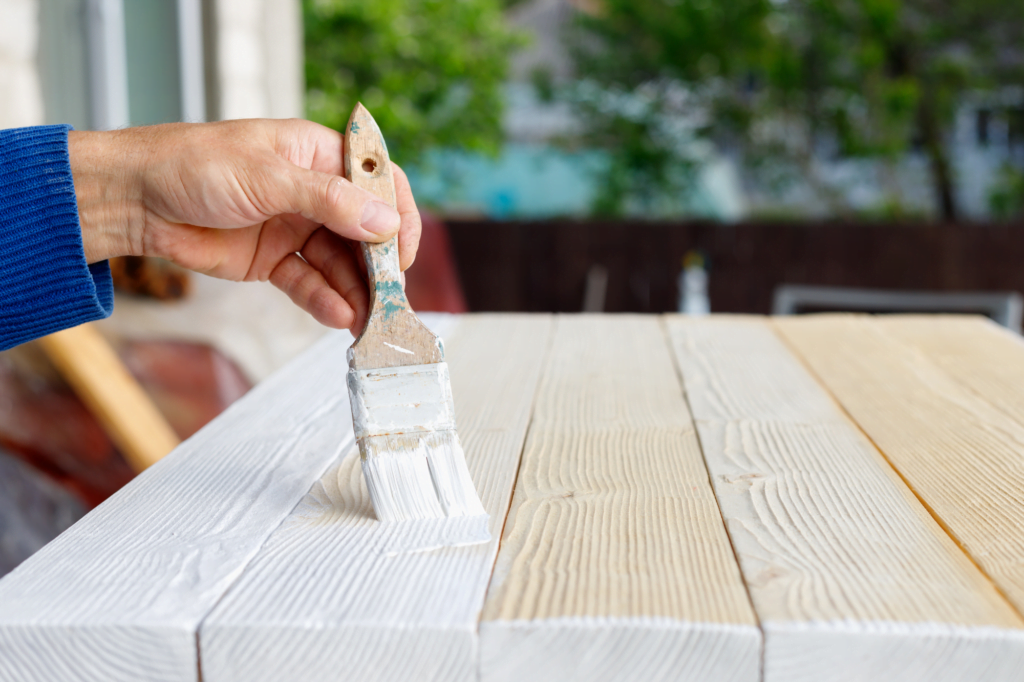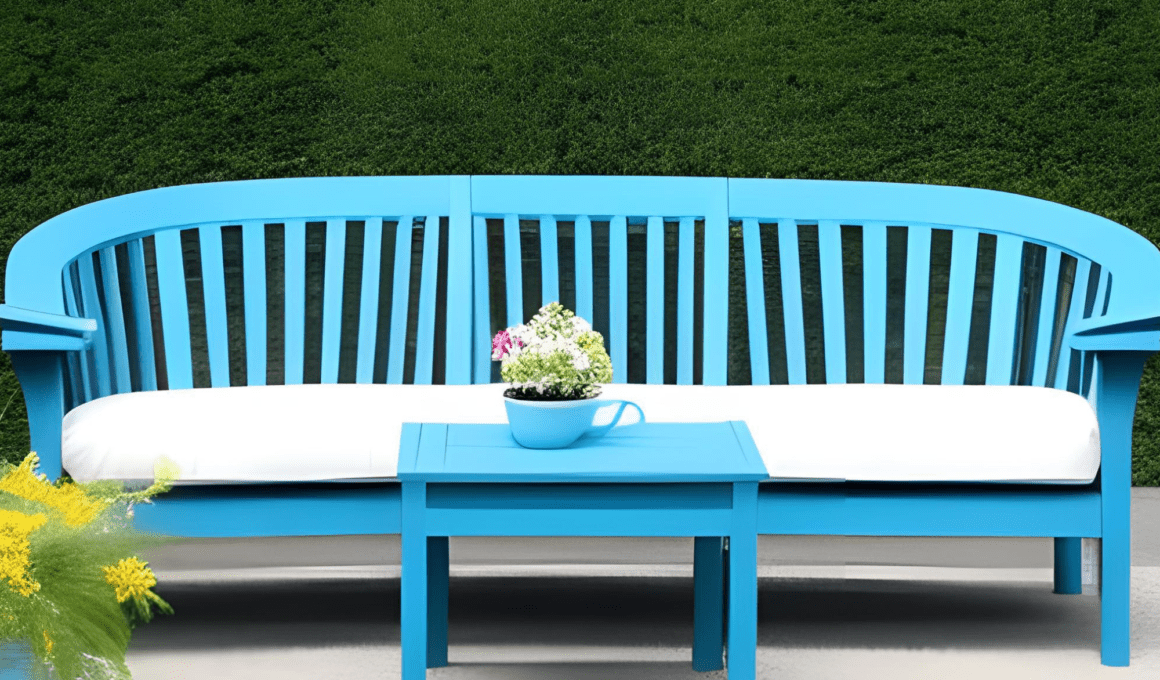Factors to Consider When Choosing Between Spray Paint Or Brush Paint
When it comes to painting outdoor furniture, choosing between spray paint and brush paint can be a difficult decision. While both options have their advantages and disadvantages, there are certain factors you should consider before making a final decision.Surface Preparation
One of the most important factors to consider when deciding between spray paint and brush paint is the condition of the surface you will be painting on. Spray paint works best on smooth, even surfaces that are free of imperfections. If the surface is rough or has many nooks and crannies, brush paint may be a better option as it can reach all the crevices and leave a more even finish.Application Speed
The amount of time it takes to apply the paint is another important factor to consider. Spray paint is generally faster to apply as it can cover large areas quickly. Brush paint, on the other hand, can take much longer to apply, especially if you’re painting a large piece of furniture.Finish Quality
The finish quality is also an important consideration. Spray paint usually results in a smooth, even finish that looks professional. Brush paint may leave brush marks or drips, especially if you’re not experienced with painting. However, brush paint can also provide a more textured finish that some people prefer.Ease of Use
Finally, you should consider the ease of use of each option. Spray paint can be more difficult to control and may require a bit of practice to achieve the desired result. Brush paint is easier to control, but may require more time and effort to achieve a professional-looking finish. Ultimately, the decision between spray paint and brush paint will depend on your personal preferences and the specific needs of your project. If you’re looking for a quick and easy way to paint outdoor furniture, spray paint may be the best option. However, if you’re willing to invest more time and effort, brush paint can provide a more unique and textured finish.Tips for Spray Painting Outdoor Furniture
If you’ve decided to use spray paint for your outdoor furniture, there are a few tips to keep in mind to ensure a smooth and professional-looking finish.
Choose the Best Spray Paint for Outdoor Use
Not all spray paints are created equal, and some are better suited for outdoor use than others. Look for spray paints that are specifically designed for outdoor applications and offer durability and protection against the elements. Rust-Oleum is a popular brand that offers a wide range of spray paints for outdoor use.Prepare the Furniture for Spraying
Before you start spraying, make sure the furniture is clean and free from any dirt, dust, or debris. Sand the surface with a fine-grit sandpaper to create a rough surface for the paint to adhere to. It’s also a good idea to use a primer before spraying to ensure better adhesion and a smoother finish.Achieve an Even Spray
Hold the can 8 to 10 inches away from the surface of the furniture, and spray in a sweeping motion, moving the can back and forth to achieve an even coat. Be sure to overlap each pass slightly to avoid any missed spots or drips. Apply thin coats to avoid drips or runs and allow each coat to dry completely before applying the next.Protect Yourself and Your Surroundings
Spray painting can create a lot of overspray, so it’s important to protect yourself and your surroundings. Wear a mask to avoid inhaling fumes and paint particles, and work in a well-ventilated area or outdoors. Cover any surrounding objects or surfaces with drop cloths or plastic to avoid accidental overspray.“Using spray paint for outdoor furniture can be a great way to achieve a smooth and professional-looking finish, but it’s important to choose the right paint, prepare the surface properly, and take the necessary safety precautions.”
Tips for Brush Painting Outdoor Furniture
Brush painting outdoor furniture requires a bit more time and effort than spray painting, but it allows for greater control and precision. Follow these tips to achieve a smooth and durable finish:
Follow these tips to achieve a smooth and durable finish:
- Choose the right brush: Select a high-quality brush designed for use with the type of paint you’re using. A brush with synthetic bristles is best for applying water-based paints, while natural bristle brushes work well with oil-based paints.
- Prepare the surface: Clean the furniture thoroughly and remove any peeling or flaking paint. Sand the surface lightly to create a smooth and even base for painting. Fill any cracks or holes with wood filler and let it dry completely before painting.
- Apply the paint: Dip the brush into the paint and remove any excess by tapping it against the side of the can. Begin painting in long, even strokes, working with the grain of the wood. Apply a thin coat of paint, and let it dry completely before applying another coat.
- Use the right technique: When painting broad surfaces, paint in sections to ensure even coverage. When painting edges and corners, use a smaller brush to achieve precision. For intricate designs, use a stencil to create a pattern.
- Choose the right weather conditions: Brush painting should be done on a dry day with low humidity to ensure the paint dries evenly and doesn’t run or drip. Avoid painting in direct sunlight, as this can cause the paint to dry too quickly and lead to peeling or cracking.
Is Pressure Washing Necessary Before Painting Outdoor Furniture?
Pressure washing before painting outdoor furniture is crucial to ensure a clean canvas for your project. Built-up dirt, grime, and mold can hinder paint adhesion, leading to an uneven finish and reduced durability. By utilizing pressure washing before painting house, you can remove these contaminants, allowing the paint to adhere properly and ensuring a long-lasting and professional-looking result.
Recommended Paints for Outdoor Furniture
Choosing the right type of paint for your outdoor furniture is important to ensure its longevity and protection against the elements. Here are some recommended paints that are suitable for outdoor furniture:| Paint | Description |
|---|---|
| Krylon Colormaster | This spray paint is durable and weather-resistant, making it a great choice for outdoor furniture. It comes in a variety of colors and finishes, including matte, satin, and gloss. |
| Rust-Oleum Painter’s Touch | This brush-on paint provides superior coverage and protection against rust and fading. It can be used on a variety of surfaces, including wood, metal, and plastic. |
| Behr Premium Plus Ultra Exterior Paint and Primer in One | This paint is ideal for outdoor furniture that requires a more sophisticated finish. It provides excellent coverage and protection against UV rays and water damage. |








